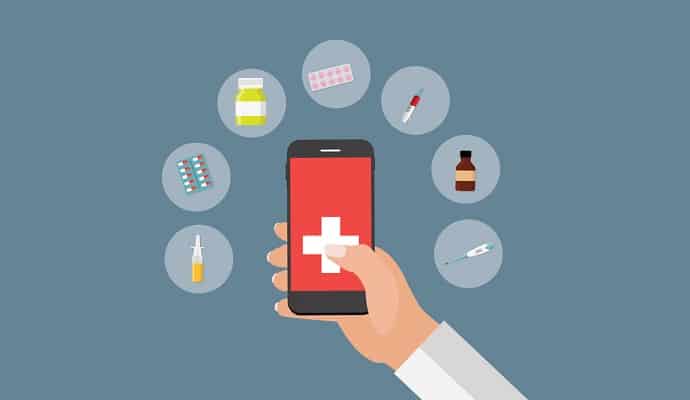
By Ellie Batchiyska
Inefficient hospital communication systems can lead to critical misunderstandings. When it comes to treating a patient, effective channels of communication between doctors and their medical team is of utmost importance, as it can offset risk of malpractice and keep patients in good health.
Still, countless hospitals across the country are operating on outdated systems of communication relying on clipboards, notes, and an overall paper trail. Fortunately, however, 73% of hospitals are developing mobile communication strategies that rely on technology to store patient health records and streamline the kind of care they need.
In order for more hospitals to develop this modernized approach to internal communications, there are a number of tools and strategies that can be implemented.
#1) Replace clipboards with tablets.
Well, maybe not entirely. While having a paper trail is a valuable asset, it’s vulnerable to human error and further fragmentation of existing healthcare records. Doctors should be equipped with hospital-supplied tablets in which they can keep personal notes, gain access to electronic health records, and access the internet for research purposes.
While some may argue that tablets are a distracting feature, research proves otherwise. A 2012 study found that tablets made doctors feel more efficient. They reportedly saved doctors an hour a day and decreased patient care delays.
#2) Cloud-based health records.
All patient health records should be transferred to a cloud software. This allows everyone on a medical team (from doctors to nurses to respiratory therapists) to access the patient’s medical history and current care plan.
It also significantly decreases risk of human error due to illegible handwriting, misprints, etc. A cloud-based software can also eliminate the infamous siloing that often occurs with patient medical records, meaning they get restricted to one department or healthcare provider. A Clinical Communication & Collaboration (CC&C) platform can greatly contribute to resolving this issue.
This also allows for automation of patient follow-ups, reminders, prescription refills, and so on. When medical professionals create in-team communication easier, they create more time for their patients.
#3) Invest in portable communication.
Smartphones and other portable devices are becoming a more common fixture in hospitals. This is essential, as messenger systems, beepers, and PA systems can be deeply flawed. Only limited information can often be distributed through these channels, whereas smartphones and two-way radios work across various scenarios.
For starters, smartphones and two-way radios have a broader reach. Furthermore, two-way radios don’t operate on a cellular network, making them even more reliable than their mobile counterparts. Many also come with emergency features that make them invaluable to emergency medical technicians.
GPS-mapping features on two-way radios make it easier to locate medical professionals in a hospital in the event of an emergency. They also have multiple channels that can be designated for different medical teams.
Final Considerations
One of the biggest hesitations hospital administrators have about modernizing their communication system is related to patient privacy. It can be difficult to secure confidential health records, so all cloud systems will need to be heavily encrypted and password protected.
Many hospitals may also have to undergo a training program for these new systems, but it will be well worth it. For most healthcare facilities, modernizing communication tools leads to increased productivity, higher patient satisfaction, and expedited treatment.
Ellie Batchiyska is a writer for Discount Two-Way Radio, an RCA radio retailer that caters to hospitals, law enforcement, emergency responders, and various other public service professionals.
The Editorial Team at Healthcare Business Today is made up of skilled healthcare writers and experts, led by our managing editor, Daniel Casciato, who has over 25 years of experience in healthcare writing. Since 1998, we have produced compelling and informative content for numerous publications, establishing ourselves as a trusted resource for health and wellness information. We offer readers access to fresh health, medicine, science, and technology developments and the latest in patient news, emphasizing how these developments affect our lives.








